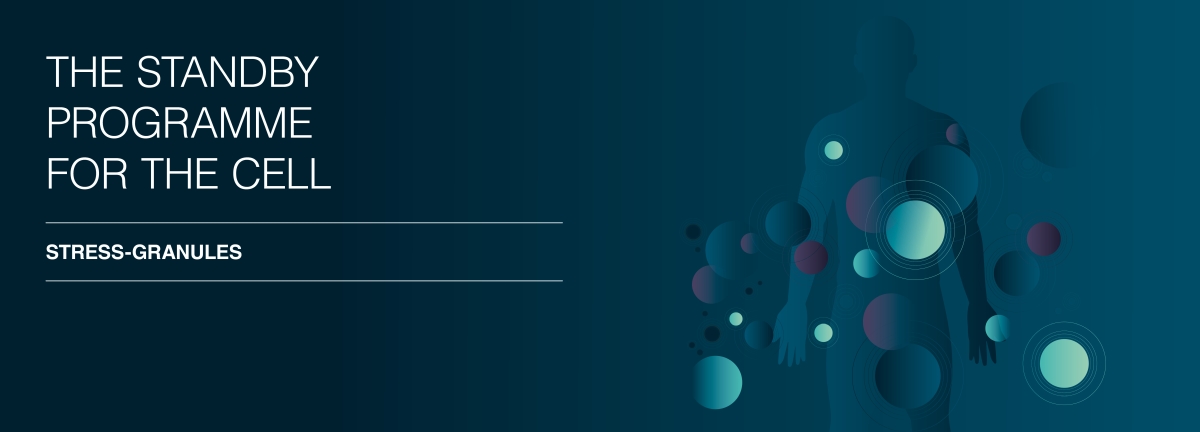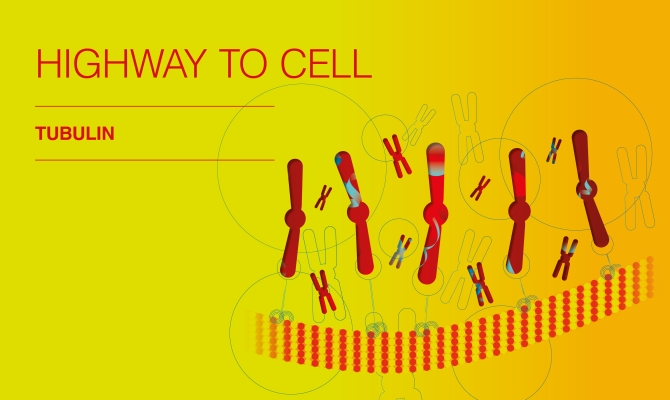
The standby programme for cells
Hidden heroes in our somatic cells
Stress is a common occurrence in our day-to-day lives. Whether it’s exams, juggling different tasks at work or dealing with hectic traffic, we often face situations that put us under pressure. The question is, how do we handle them? The answer often comes down to our own personal resilience – our ability to emerge from stressful situations without lasting damage.
Just like people, our cells are exposed to daily stress factors, too. Heat, cold, germs, toxins, dehydration – these all put our cells under pressure. But how do they cope with this stress? This is where a fascinating mechanism comes into play: stress granules. These tiny organelles play a crucial role by helping cells to adapt to stress and to withstand adverse conditions.
Again, resilience is a key factor. Our cells overcome stress without suffering significant damage because they can actively adapt to the situation.
Survival under pressure
The somatic cells of plants and animals, as well as those of some single-celled organisms such as yeast, are called eukaryotic cells because they have a true (from the ancient Greek eu) nucleus (karyon). These cells have developed an amazing survival mechanism in the form of stress granules.
When under stress, the cells put themselves on the back burner, as it were: they shut down cell activity, restrict the production and repair of their proteins and pack the most important molecules – mRNA – into round granules with a flexible, protective outer shell. Once the stress situation has been overcome, the granules disperse again, the molecules are released and the cell metabolism goes back to normal.
Hidden heroes
Let’s imagine these stress granules as little heroes in our cells – when pressure grows, they are assembled and help to organise cell proteins and protect mRNA, and in doing so make the cell resistant. Without them, it would be barely possible for our cells to survive in a world where they are exposed to huge amounts of stress time and again.
Nature “invented” the stress granules more than 100 million years ago. It’s possible the mechanism is even more than 2 billion years old, because that’s when the first multicellular organisms came into being. Without this amazing invention, it is highly probable that multicellular, complex organisms like us humans would not have been able to exist.
What does the future hold?
Research into stress granules is promising fascinating insights into the resilience of cellular systems. This newly acquired knowledge is not just very exciting, it could also play a key role in developing new therapies and medication in the future. Understanding the dynamics and operating principles of stress granules will broaden our view of how cellular mechanisms cope with stressful situations – and perhaps teach us a few lessons for our own lives too.
A journey with lots in store
Under the slogan “Chemistry Inside”, we will be delving into a range of topics this year to shine a light on the world of chemistry and biology inside the human body. We are looking forward to sharing more interesting facts, substances and processes with you throughout the year. So stay tuned for more to come!
Sources:
https://blaetterkatalog.carlroth.com/CARL_2302_DE/
https://www.lmu.de/de/newsroom/newsuebersicht/news/den-gemeinsamen-nenner-finden.html
https://www.mpg.de/18334020/aschenputtel-der-chemischen-biologie
https://www.biomol.com/de/blog/detail/sCategory/205/blogArticle/252


